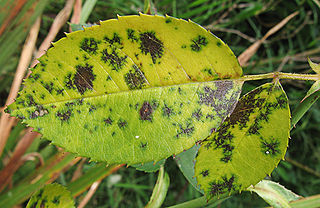Related Research Articles

Rosicrucianism is a spiritual and cultural movement that arose in Europe in the early 17th century after the publication of several texts that purported to announce the existence of a hitherto unknown esoteric order to the world and made seeking its knowledge attractive to many. The mysterious doctrine of the order is "built on esoteric truths of the ancient past", which "concealed from the average man, provide insight into nature, the physical universe, and the spiritual realm." The manifestos do not elaborate extensively on the matter, but clearly combine references to Kabbalah, Hermeticism, alchemy, and Christian mysticism.

The Ancient and Mystical Order Rosæ Crucis (AMORC), also known as the Rosicrucian Order, is the largest Rosicrucian organization in the world. It has various lodges, chapters and other affiliated bodies throughout the globe, operating in 19 different languages. It operates as a fraternal order in the mystical tradition, and supports secular research and learning in the arts and humanities.
FUDOFSI, headed by Constant Chevillon (1880–1944), was a federation of independent esoteric orders similar to FUDOSI, but strongly opposed to the other group.

Santa Rosae was, before the end of the last ice age, an ancient landmass off the coast of present-day southern California, near Santa Barbara County and Ventura County, of which the northern Channel Islands of California are remnants. At its largest, Santa Rosae was roughly 3-4 times bigger than the northern Channel Islands of today, nearly 125 km long from east to west. Between about 20,000 and 5,000 years ago, Santa Rosae lost about 70% of its land mass to post-glacial rising sea level, leaving behind a vast submerged landscape currently being explored by scientists. San Miguel, Santa Rosa, Santa Cruz, and Anacapa Island comprise the unsubmerged portions of Santa Rosae today. This island was about 5 miles offshore. It broke up between about 11,000 and 9,000 years ago, and the present northern Channel Islands took their shape after the continental ice sheets melted and sea levels rose by about 100 meters.
The Arlington Springs man is a set of Late Pleistocene human remains discovered in 1959 on Santa Rosa Island, one of the Channel Islands located off the coast of Southern California. The Arlington Springs archeological site is protected within northern Channel Islands National Park, and in Santa Barbara County.

The pygmy mammoth or Channel Islands mammoth is an extinct species of dwarf elephant descended from the Columbian mammoth of mainland North America. This species became extinct during the Quaternary extinction event in which many megafauna species became extinct due to changing conditions to which the species could not adapt. A case of island or insular dwarfism, from a recent analysis in 2010 it was determined that M. exilis was on average, 1.72 m (5.6 ft) tall at the shoulders and 760 kg (1,680 lb) in weight, in stark contrast to its 4.3 m (14 ft) tall, 9,070 kg (20,000 lb) ancestor. Another estimate gives a shoulder height of 2.02 m (6.6 ft) and a weight of 1,350 kg (2,980 lb).

The Ozark cavefish, Amblyopsis rosae, is a small subterranean freshwater fish endemic to the United States. It has been listed as a threatened species in the US since 1984; the IUCN lists the species as Near Threatened. It is listed as endangered by the Missouri Department of Conservation.

The carrot fly is a pest of gardens and farms, and mainly affects the crop of carrots, but can also attack parsnips, parsley and celery. It is a member of the family Psilidae.

The Psilidae are family of flies. Commonly called the rust flies, at least 38 species are in four genera. The carrot fly is a member of this group. They are found mainly in the Holarctic.

Diplocarpon rosae is a fungus that creates the rose black spot disease. Because it was observed by people of various countries around the same time, the nomenclature for the fungus varied with about 25 different names. The asexual stage is now known to be Marssonina rosae, while the sexual and most common stage is known as Diplocarpon rosae.
Perbrinckia rosae is a species of decapod in the family Gecarcinucidae.

Diplolepis rosae is a gall wasp which causes a gall known as the rose bedeguar gall, Robin's pincushion, mossy rose gall, or simply moss gall. The gall develops as a chemically induced distortion of an unopened leaf axillary or terminal bud, mostly on field rose or dog rose shrubs. The female wasp lays up to 60 eggs within each leaf bud using her ovipositor. The grubs develop within the gall, and the wasps emerge in spring; the wasp is parthenogenetic with fewer than one percent being males.

The Heidi Klum rose is a variety of Floribunda rose from the Tantau company, registered in 1999 with the registration number RT 00681. It was made by crossing Old Port and Barkarole roses. The variety was officially named by Heidi Klum in 2005.

Hippotion rosae is a moth of the family Sphingidae first described by Arthur Gardiner Butler in 1882. It is known from dry areas from south-western Africa to Mozambique and northwards to eastern Africa. It is also present on Socotra.

Nephele rosae is a moth in the family Sphingidae. It is endemic to Africa.

Hemilophini is a tribe of longhorn beetles of the subfamily Lamiinae.
Mexicoscylus is a genus of longhorn beetles of the subfamily Lamiinae, containing the following species:
Mexicoscylus bivittatus is a species of beetle in the family Cerambycidae. It was described by Charles Joseph Gahan in 1892. It is known from Mexico.
Mexicoscylus nigritarse is a species of beetle in the family Cerambycidae. It was described by Galileo and Martins in 2013. It is known from Costa Rica.

Diplolepis mayri is a gall inducing insect causing galls on wild roses in the Western Palaearctic. Diploleis mayri is less frequent on rose shrubs than D. rosae.
References
- ↑ Mexicoscylus rosae Archived 2016-04-11 at the Wayback Machine at World Cerambycidae.